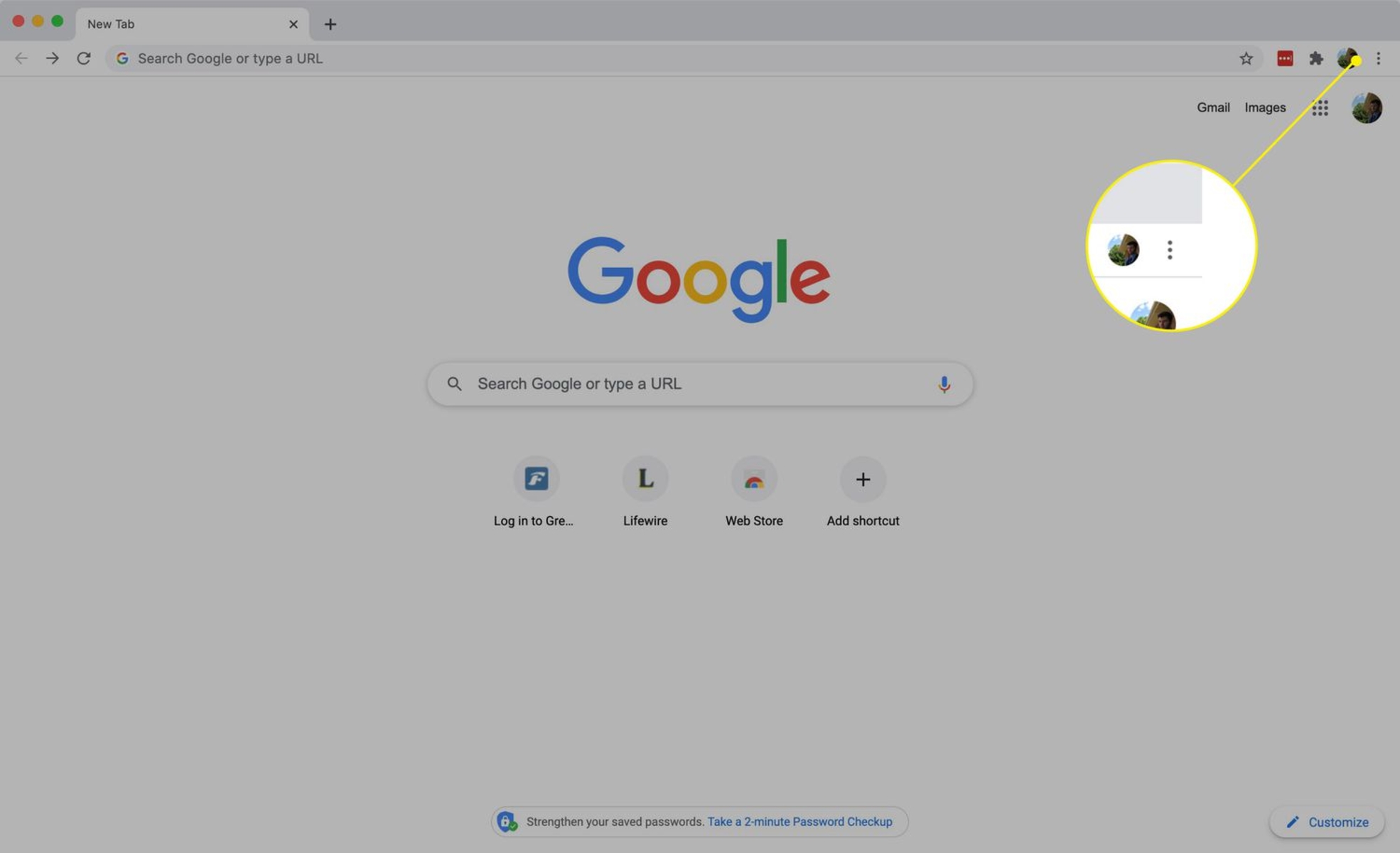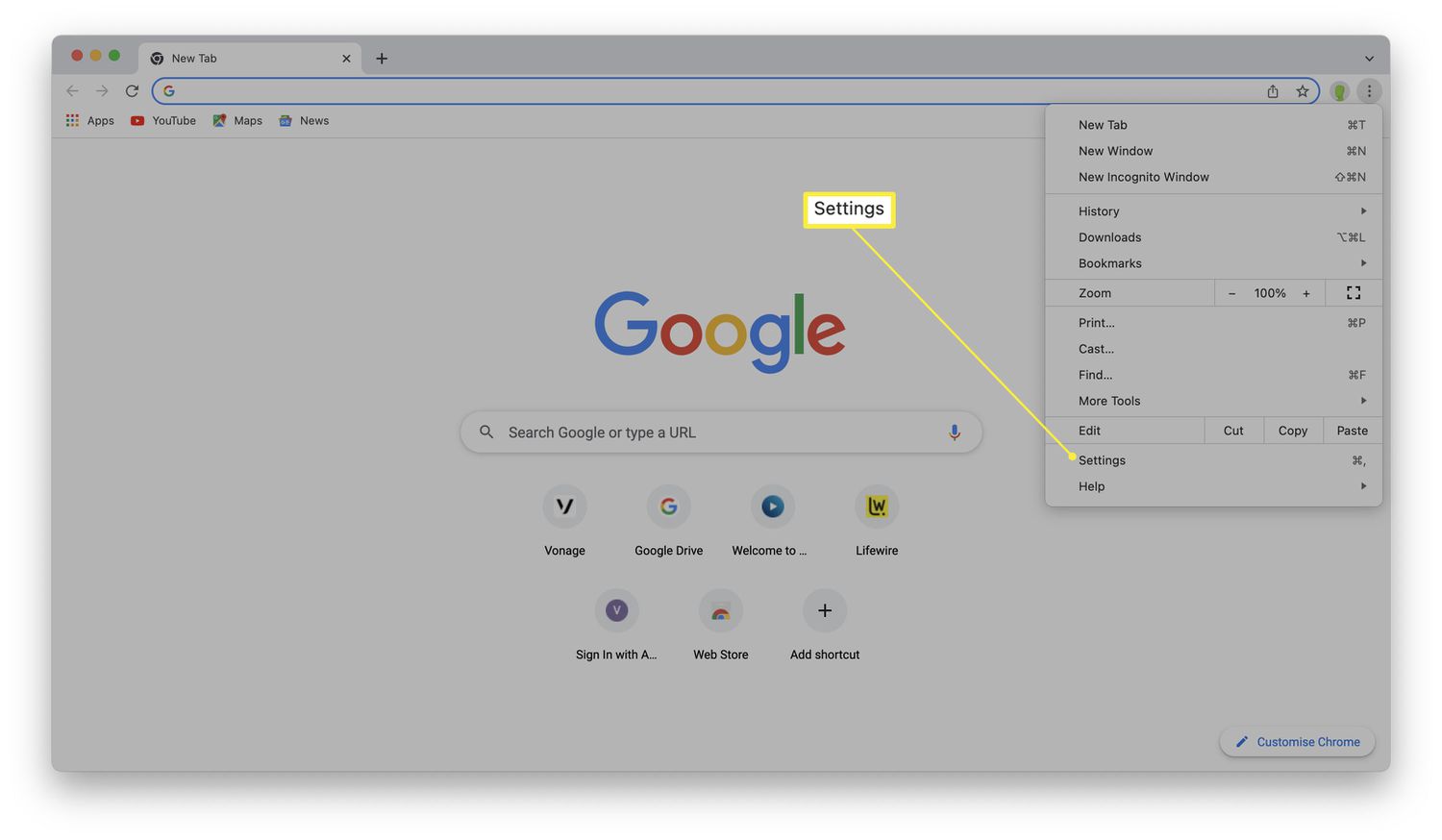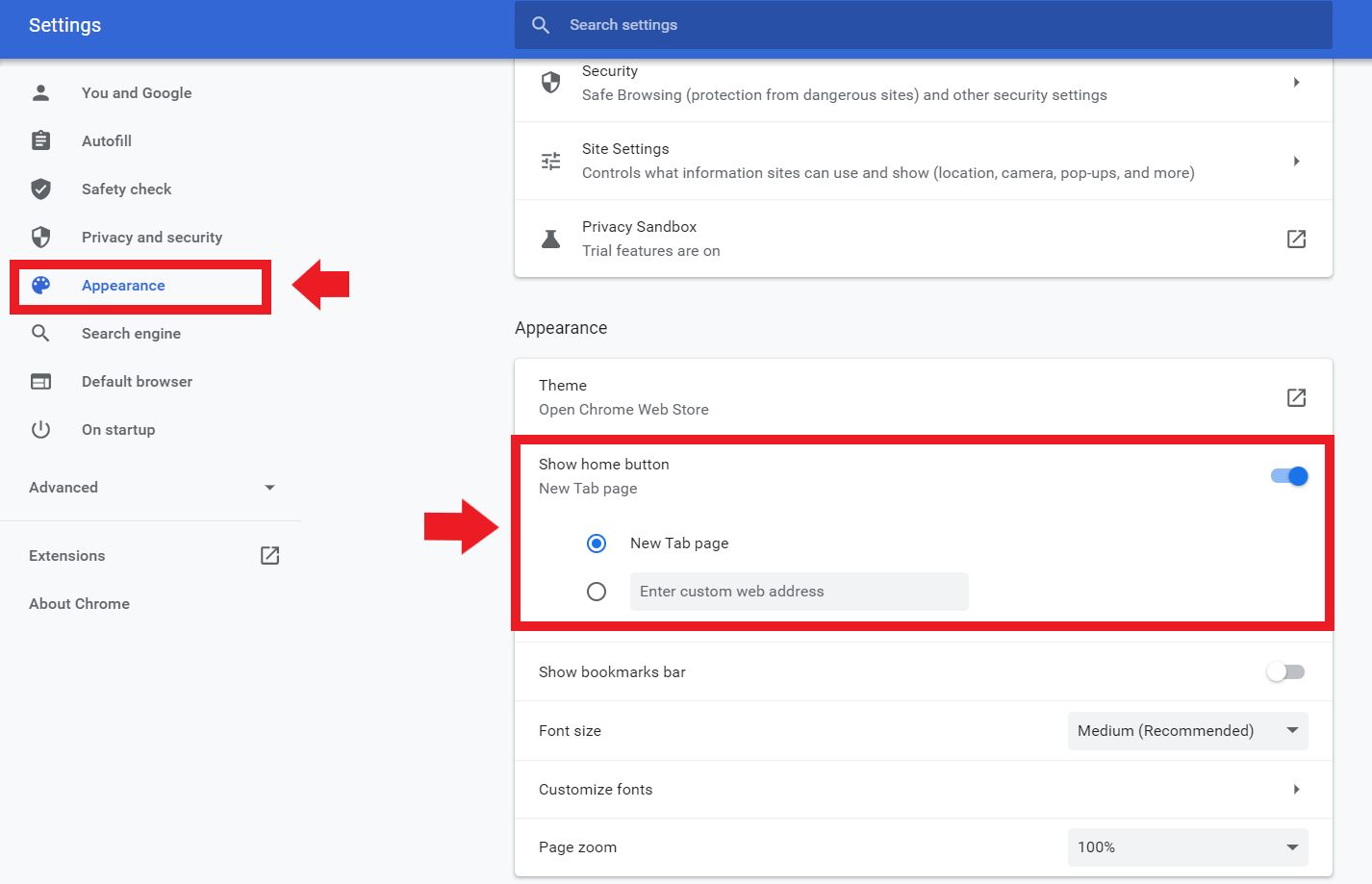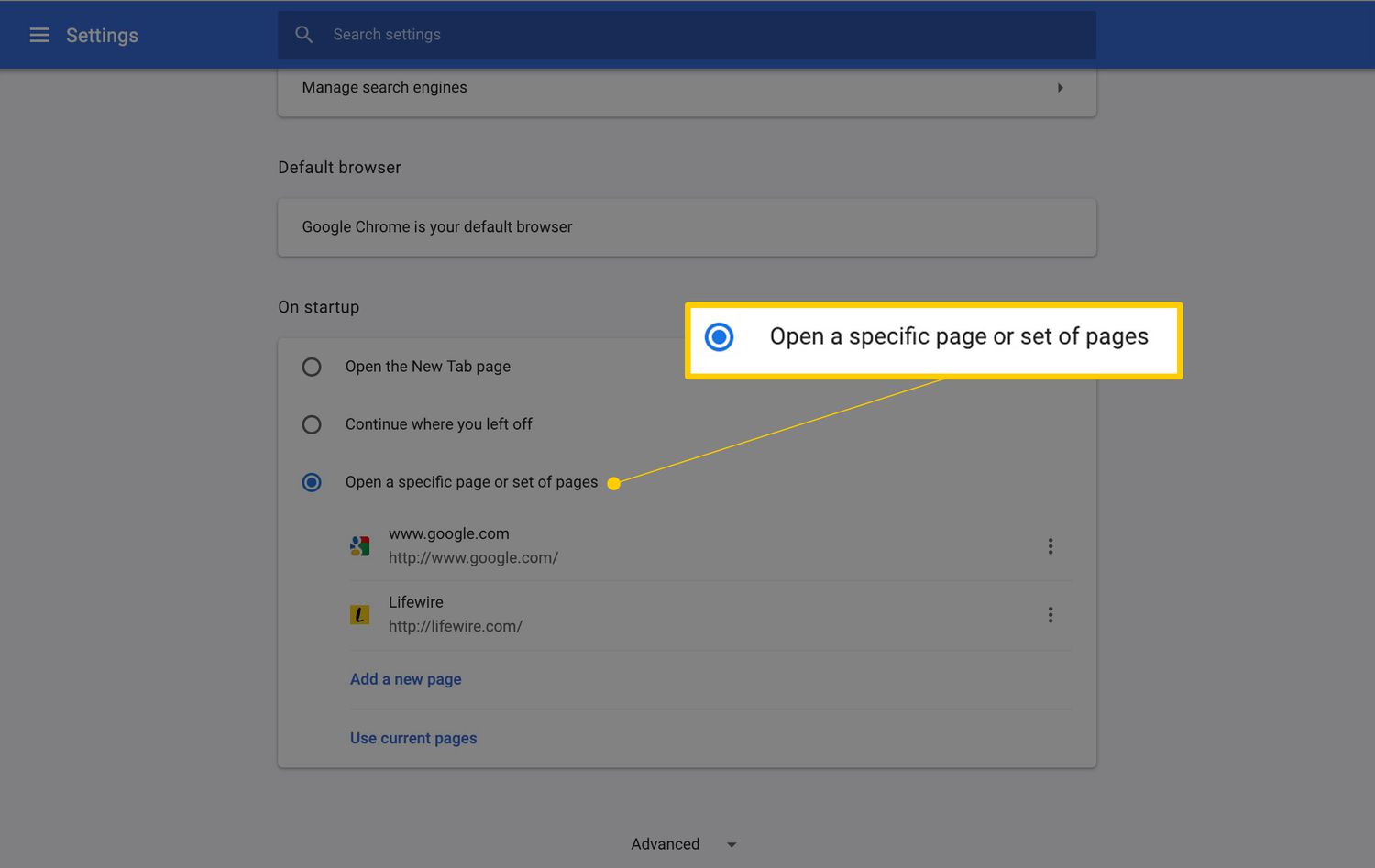Introduction
Google Chrome is one of the most popular web browsers, known for its speed, simplicity, and user-friendly interface. It offers a range of customizable features, including the ability to set a specific homepage. Your homepage is the first page that appears when you launch the browser or click on the home button. It serves as a gateway to your most frequently visited websites, providing quick access to essential information and resources.
Customizing your homepage in Google Chrome allows you to personalize your browsing experience, making it more efficient and tailored to your preferences. Whether you want to set a favorite search engine, a news website, or a productivity tool as your homepage, Google Chrome makes it easy to do so. By following a few simple steps, you can change your homepage to suit your needs and streamline your online activities.
In this guide, we will walk you through the process of changing your homepage in Google Chrome. Whether you're looking to enhance your browsing efficiency, stay updated with the latest news, or simply add a personal touch to your browser, customizing your homepage can make your online experience more enjoyable and productive. Let's dive into the steps to transform your Google Chrome homepage and make it a reflection of your browsing preferences.
Step 1: Open Google Chrome
To begin the process of changing your homepage in Google Chrome, the first step is to open the browser on your computer or mobile device. Google Chrome is widely available across various platforms, including Windows, macOS, Linux, Android, and iOS, making it accessible to a diverse range of users.
On a Windows computer, you can open Google Chrome by clicking on the Chrome icon located on your desktop or by searching for "Google Chrome" in the Start menu and selecting the application from the search results. Alternatively, you can access Chrome from the taskbar if it has been pinned for quick access.
For macOS users, launching Google Chrome is as simple as clicking on the Chrome icon in the Dock or locating it in the Applications folder and opening it from there. Additionally, you can use Spotlight Search to quickly find and open the Chrome browser on your Mac.
If you're using a Linux-based system, the method for opening Google Chrome may vary depending on your specific distribution. However, in most cases, you can launch the browser from the applications menu or by using the terminal to execute the appropriate command.
On mobile devices running the Android operating system, you can tap the Google Chrome icon on your home screen or in the app drawer to open the browser. Similarly, iOS users can access Google Chrome by tapping its icon on the home screen or within the app library.
Once Google Chrome is open, you will be greeted by the familiar interface that offers a clean and intuitive browsing experience. The next step in the process of changing your homepage involves accessing the browser's settings, where you can customize various aspects of your browsing environment, including the homepage.
With Google Chrome now open on your device, you are ready to proceed to the next step and navigate to the settings menu, where you can make the desired changes to your homepage.
Step 2: Go to Settings
After opening Google Chrome, the next crucial step in changing your homepage is to access the settings menu. Google Chrome offers a user-friendly interface that makes it easy to navigate and customize various aspects of the browser, including the homepage setting.
To access the settings, look for the three-dot menu icon located in the top-right corner of the browser window. This icon serves as the gateway to a range of options and features that allow you to personalize your browsing experience. Click on the icon to reveal a dropdown menu, where you will find the "Settings" option. Selecting "Settings" will take you to the dedicated settings page, where you can manage and modify different aspects of Google Chrome.
Upon clicking on "Settings," you will be presented with a comprehensive array of customization options, organized into different sections for ease of navigation. The settings page provides access to a wide range of features, including privacy and security settings, appearance customization, advanced options, and more.
One of the key sections within the settings menu is the "Appearance" category, which encompasses various visual and user interface settings. Here, you can find the option to customize your homepage. By clicking on the "Appearance" section, you will be able to access the specific settings related to the browser's visual presentation, including the homepage configuration.
In addition to the "Appearance" section, the settings menu also offers a search bar at the top, allowing you to quickly locate specific settings by entering keywords or phrases. This feature can be particularly useful if you are looking for a specific option, such as the homepage setting, and want to navigate directly to the relevant section without scrolling through the entire settings page.
Navigating to the settings menu in Google Chrome provides you with the essential access point for customizing your browsing experience. The intuitive layout and organization of the settings page make it convenient to locate the homepage setting and proceed with the necessary changes. With the settings menu now accessible, you are ready to move on to the next step of changing your homepage in Google Chrome.
By successfully reaching the settings menu, you have taken a significant stride toward personalizing your browsing environment and optimizing your online experience. The next step involves modifying the homepage setting to reflect your preferences and enhance your browsing efficiency.
Step 3: Change Homepage
Upon reaching the settings menu in Google Chrome, you are now poised to embark on the pivotal step of changing your homepage. The process of modifying the homepage setting is straightforward and empowers you to tailor your browsing experience to align with your preferences and needs.
Within the settings menu, navigate to the "Appearance" section, where you will find the option to customize the homepage. Look for the subsection specifically dedicated to the homepage setting, which is designed to allow users to define their preferred landing page when launching the browser or clicking on the home button.
Once you have located the homepage setting, you will typically encounter a designated field or input box where you can enter the URL of your desired homepage. This presents an opportunity to select a website, web application, or search engine that holds significance for you and serves as an ideal starting point for your browsing sessions.
To change your homepage, simply click on the existing URL displayed in the designated field and replace it with the URL of your preferred webpage. This could be the address of a news website, a productivity tool, an educational resource, or any other site that you wish to set as your default homepage.
In addition to manually entering the URL, Google Chrome offers the flexibility to set your current tab as the homepage. This feature is particularly convenient if you have the desired webpage open in a tab within the browser. By selecting the option to use the current tab as the homepage, you can instantly designate the active webpage as your new default landing page.
Furthermore, Google Chrome provides the option to use the "New Tab" page as the homepage. This setting ensures that each time you launch the browser or click on the home button, you are greeted by a blank tab, ready to embark on new browsing sessions or access frequently visited sites from the visual bookmarks and recommended articles presented on the New Tab page.
Once you have inputted the desired URL or selected the current tab or New Tab page as your homepage, ensure that the changes are saved to finalize the customization process. Google Chrome typically includes a "Save" or "Apply" button within the settings interface, allowing you to confirm and implement the modifications to the homepage setting.
By successfully changing your homepage in Google Chrome, you have taken a significant step toward personalizing your browsing environment and optimizing your online experience. The ability to define a custom homepage empowers you to streamline your browsing activities, access essential resources with ease, and infuse your online interactions with a touch of personalization.
With the homepage setting now modified to reflect your preferences, you are ready to proceed to the final step of saving the changes and ensuring that your customized homepage is seamlessly integrated into your browsing routine.
Step 4: Save Changes
After customizing your homepage in Google Chrome to align with your preferences, it is essential to save the changes to ensure that your new homepage setting is implemented effectively. The process of saving the modifications is a crucial final step that solidifies the customization of your browsing environment and ensures that your preferred homepage becomes the default landing page when you launch the browser or click on the home button.
Upon completing the adjustments to the homepage setting, navigate to the bottom of the settings page in Google Chrome, where you will typically find an option to save or apply the changes. This may be presented as a button labeled "Save," "Apply," or a similar action-oriented term that signifies the confirmation and implementation of the modified settings.
Clicking on the designated button to save the changes triggers the browser to update the homepage setting, incorporating the newly defined URL or selected option (such as the current tab or New Tab page) as the default landing page. This action ensures that your customized homepage is seamlessly integrated into your browsing routine, ready to greet you whenever you initiate a browsing session.
By saving the changes to the homepage setting, you solidify the personalization of your browsing experience, allowing you to access your preferred webpage or starting point with ease and efficiency. Whether you have chosen a news website to stay informed, a search engine for quick queries, or the New Tab page for a fresh start, the saved changes ensure that your selected homepage becomes the focal point of your browsing activities.
It is important to note that saving the changes to the homepage setting in Google Chrome is a simple yet impactful action that empowers you to tailor your browsing environment to suit your needs and preferences. This final step completes the process of customizing your homepage, marking the successful integration of your preferred landing page into the browser's interface.
With the changes now saved, you can confidently launch Google Chrome and experience the seamless transition to your newly defined homepage, setting the stage for productive and personalized browsing sessions. The act of saving the modifications to the homepage setting represents the culmination of your efforts to enhance your browsing experience and make your online interactions more tailored to your individual preferences.
Conclusion
In conclusion, customizing your homepage in Google Chrome is a simple yet impactful way to personalize your browsing experience and streamline your online activities. By following the step-by-step process outlined in this guide, you have gained the knowledge and confidence to modify your homepage, transforming it into a reflection of your browsing preferences and needs.
The ability to change your homepage empowers you to set the stage for each browsing session, ensuring that you are greeted by a familiar and relevant starting point. Whether you opt for a favorite news website to stay informed, a productivity tool to enhance efficiency, or a visually dynamic New Tab page for inspiration, the customized homepage serves as a gateway to your most frequented online destinations.
By opening Google Chrome and navigating to the settings menu, you took the first step toward personalizing your browsing environment. Accessing the settings and modifying the homepage setting allowed you to define a preferred landing page, tailored to your unique interests and requirements. Saving the changes solidified the integration of your customized homepage, ensuring that it seamlessly becomes the default starting point for your browsing sessions.
The process of changing your homepage in Google Chrome exemplifies the browser's commitment to user-centric customization, offering a range of options to enhance your browsing experience. Whether you are using Google Chrome on a computer or a mobile device, the flexibility to define your homepage empowers you to curate a browsing environment that aligns with your individual preferences and online habits.
As you embark on your browsing journeys with your newly customized homepage, remember that Google Chrome continues to offer a wealth of features and customization options to further tailor your browsing experience. From extensions and themes to advanced settings and synchronization across devices, Google Chrome provides a versatile platform for personalized and efficient online interactions.
In essence, the process of changing your homepage in Google Chrome represents a gateway to a more personalized and efficient browsing experience. By embracing the opportunity to define your preferred landing page, you have taken a proactive step toward optimizing your online interactions and infusing your browsing routine with a touch of personalization. As you navigate the digital landscape with your customized homepage, may it serve as a familiar and welcoming starting point for your online endeavors, reflecting your unique interests and aspirations.

























